I went inside one of the US' largest aircraft storage facilities and saw how it isn't emptying out despite the rise in air travel
Thomas Pallini

Pinal Airpark in Marana, Arizona.Thomas Pallini/Insider
- Pinal Airpark is home to hundreds of aircraft that have been stored by their airlines to ride out the pandemic.
- Most US carriers have reactivated their planes but foreign airlines are still filling Pinal's corridors due to lagging demand.
- Cargo carriers like Amazon are also looking to Pinal for inexpensive planes to fly packages.
Air travel in the US is roaring back to pre-pandemic levels so much so that airlines are finding themselves with too few planes and flight crew to accommodate surging demand.

Flying home from Bogota, Colombia on American Airlines.
Thomas Pallini/Insider
It's an exciting time for airlines that are finally seeing profits again after a long pandemic. But the future wasn't always this bright.
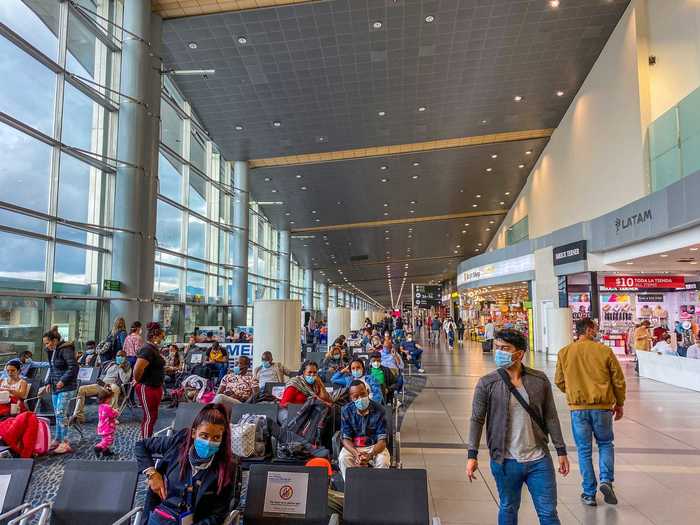
Flying home from Bogota, Colombia on American Airlines.
Thomas Pallini/Insider
Last year, most airlines around the world began the process of putting their aircraft into indefinite storage at facilities around the world, many of which in the American Southwest.
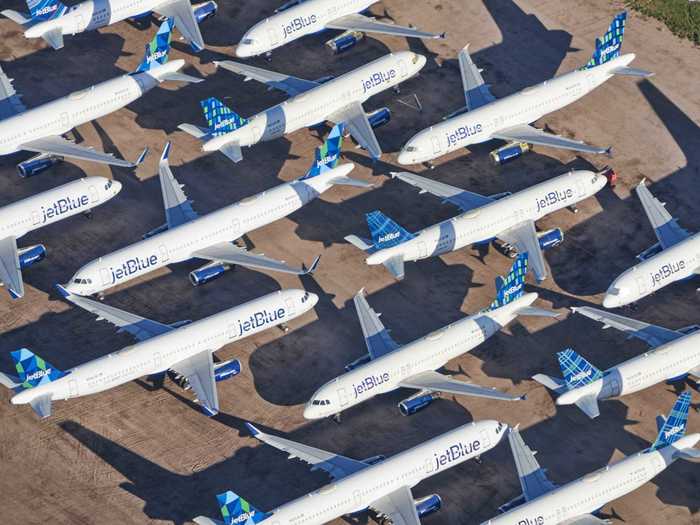
Andy Luten/Andy's Travel Blog
But even with US airlines taking back a lot of their stored planes, some facilities remain as crowded as they were at the beginning of the pandemic. Here's why.
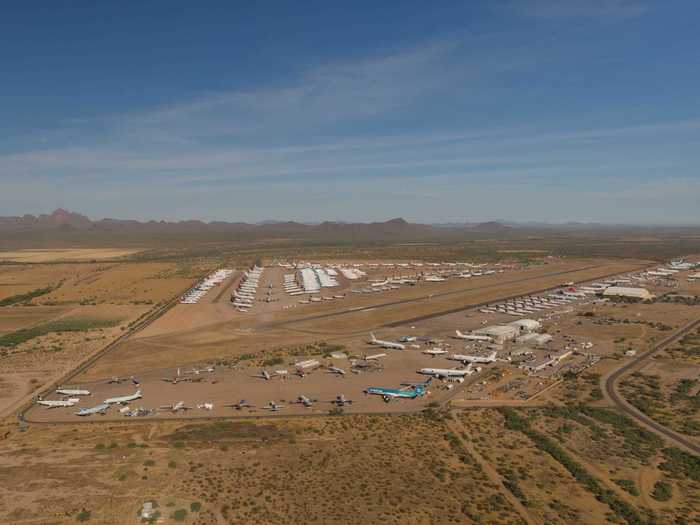
Pinal Airpark in Marana, Arizona.
Ramon Purcell/Boneyard Safari
Ascent Aviation Services boasts the largest storage and maintenance facilities at Pinal Airpark in Marana, Arizona, roughly 90 miles south of Phoenix. At its peak, the firm received 400 aircraft between its Marana and Tucson, Arizona facilities, arriving at a rate of one per hour starting in March.
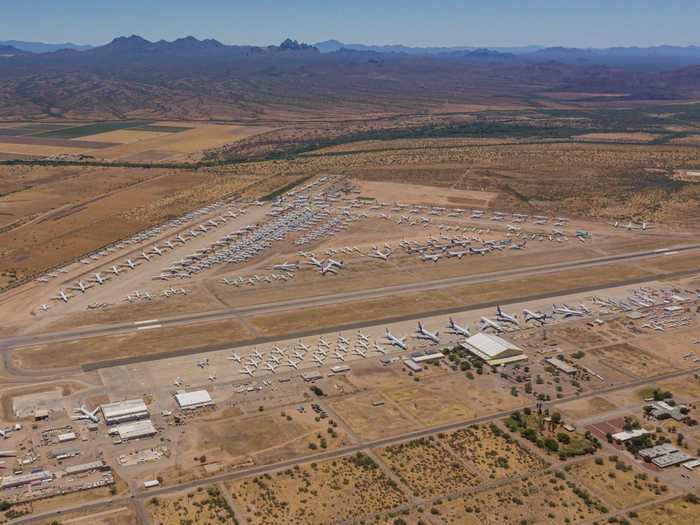
Pinal Airpark in Marana, Arizona.
Ramon Purcell/Boneyard Safari
"80% of all the stored aircraft worldwide are stored in the Southwest," Scott Butler, Ascent's chief commercial officer, told Insider.
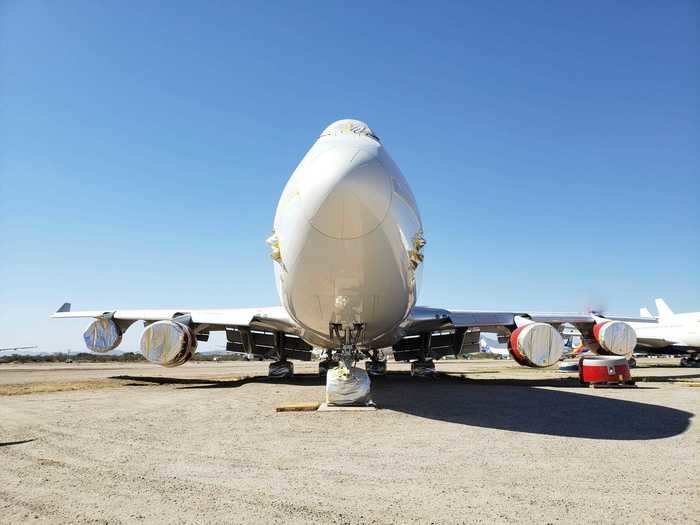
Pinal Airpark in Marana, Arizona.
Ascent Aviation Services
American storage facilities boast highly skilled mechanics and a better business environment in which to conduct transactions. The American Southwest, in addition, offers a dry and arid climate ideal for storage and preservation.
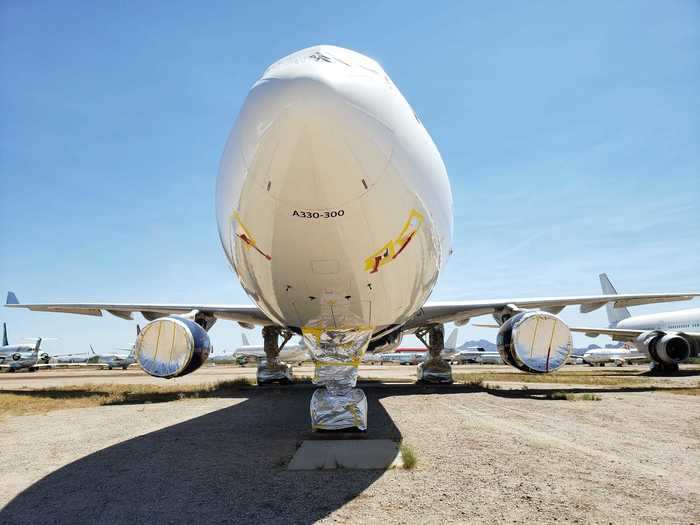
Pinal Airpark in Marana, Arizona.
Ascent Aviation Services
Before the pandemic, Ascent's stock and trade was in providing maintenance, repair, and overhaul services to airlines, with as much as 70% of its revenue coming from that division. But with aircraft usage dropping and demand for storage rising, a majority of the revenue then came from storage fees during the pandemic.
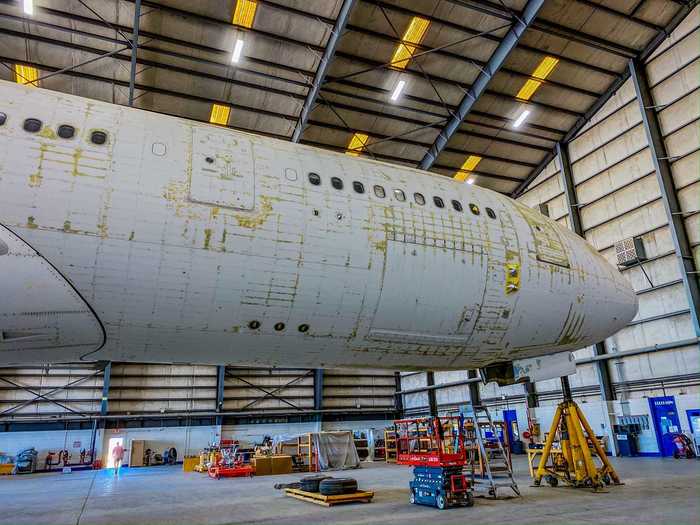
Pinal Airpark in Marana, Arizona.
Thomas Pallini/Insider
Ascent was expecting a busy 2020 in terms of arrivals due to expected aircraft retirements owing to new models like Boeing 737 Max and Airbus A220 flooding the scene. But nothing could've prepared the company for the hundreds of planes, old and new, that arrived near-constantly from March 2020 on.
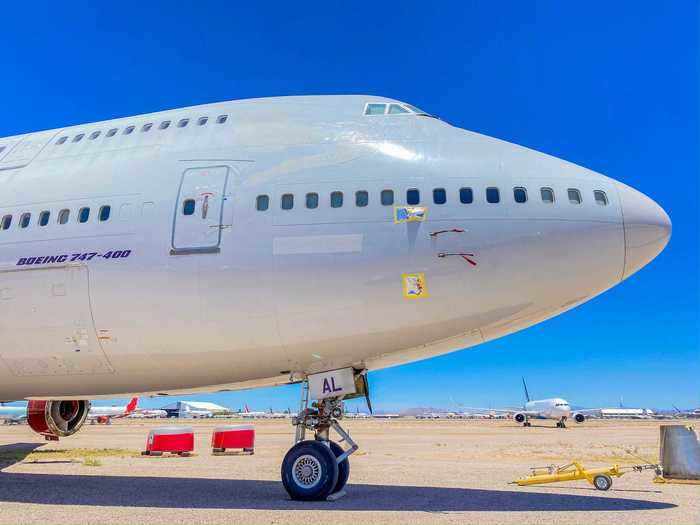
Pinal Airpark in Marana, Arizona.
Thomas Pallini/Insider
Aircraft were arriving from every corner of the globe, forcing Ascent to staff up in order to keep up. "We literally hired over 150 mechanics within about, say, three to five weeks, Butler said.
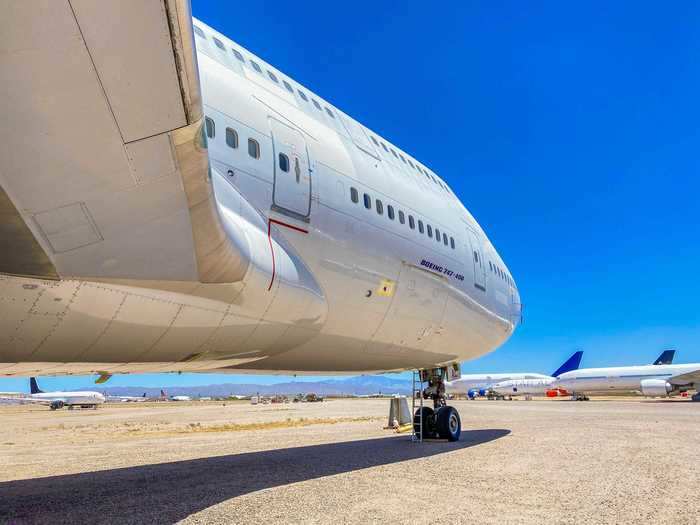
Pinal Airpark in Marana, Arizona.
Thomas Pallini/Insider
Photographer Andy Luten captured the rows and rows of JetBlue Airways planes that had arrived in Marana at the start of the pandemic, a first for the then 20-year-old airline. Overflow parking lots were also built by Ascent to accommodate low-cost carriers.
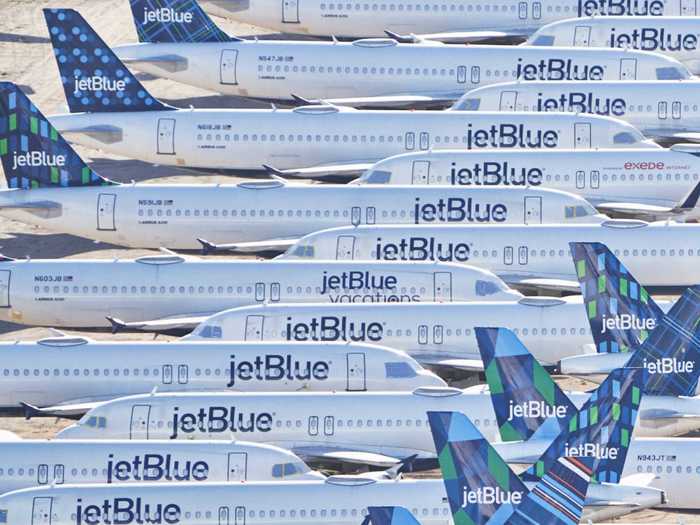
Andy Luten/Andy's Travel Blog
The first aircraft started to leave in the summer of 2020 thanks to increased leisure demand. "We had some low-cost carrier planes and they were quick to reactivate a lot with aircraft for the summertime" Butler said. "And you'll probably see that the last of them reactivate before Thanksgiving."
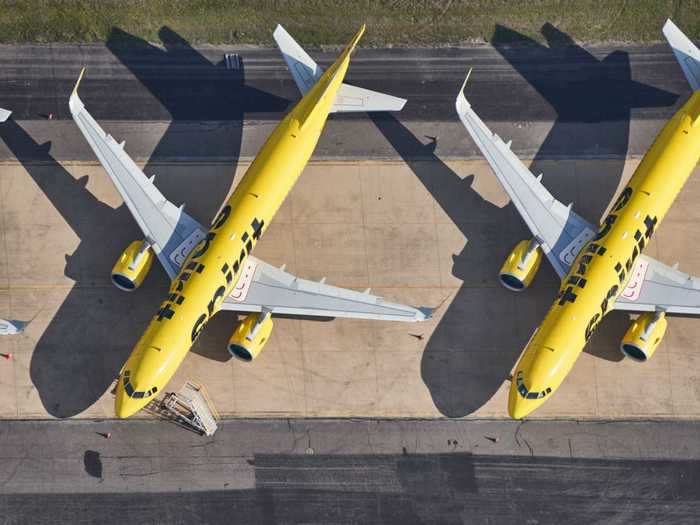
Andy Luten/Andy's Travel Blog
But even a year later, more aircraft are arriving than departing. Butler estimates that 40 aircraft will arrive between June and August with only 10 to 12 leaving Pinal, highlighting the disparities in the global vaccine rollout and the return of travel.
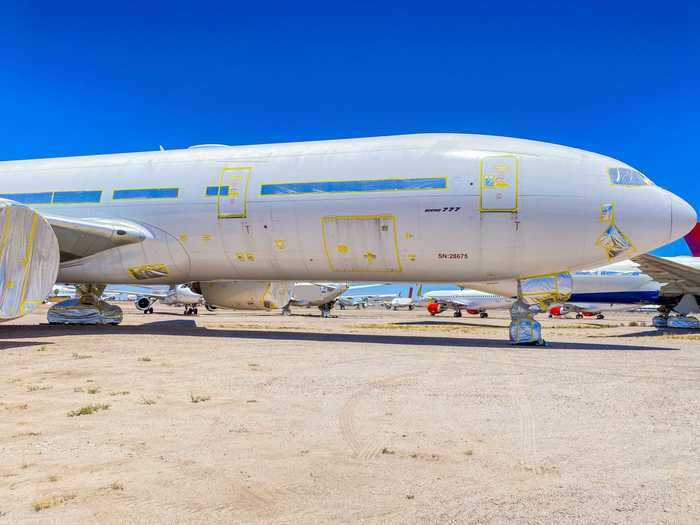
Pinal Airpark in Marana, Arizona.
Thomas Pallini/Insider
Air Canada and WestJet aircraft could be seen around the airfield, and still make up a large chunk of the population. At the time of our visit, Canada still required a two-week quarantine for international arrivals, making once-lucrative routes south of the border to the US, Caribbean, and Central America nearly worthless for Canada's airlines.
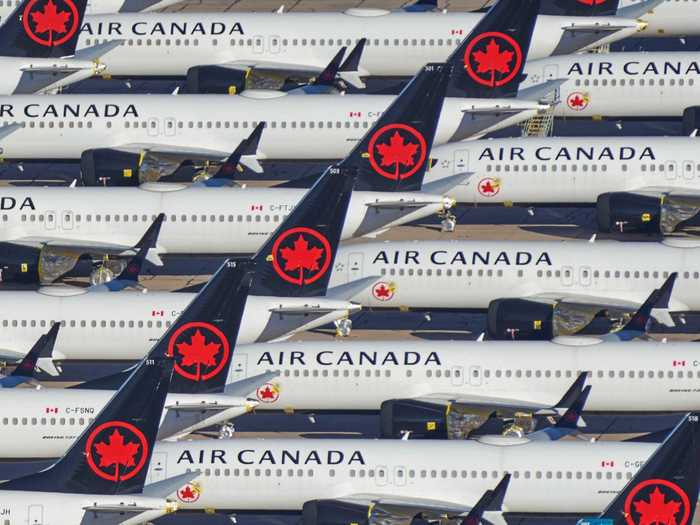
Andy Luten/Andy's Travel Blog
And it's not just Canada. Aircraft from France, Colombia, South Korea, Indonesia, and more fill the facility as demand is markedly lower outside the US.
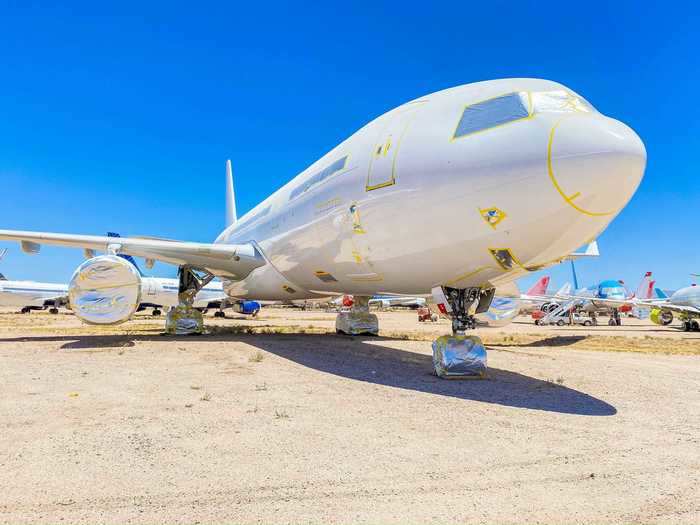
Pinal Airpark in Marana, Arizona.
Thomas Pallini/Insider
Aircraft leasing companies, taking advantage of the inexpensive prices for some aircraft, are also buying up more planes and parking them in Marana.
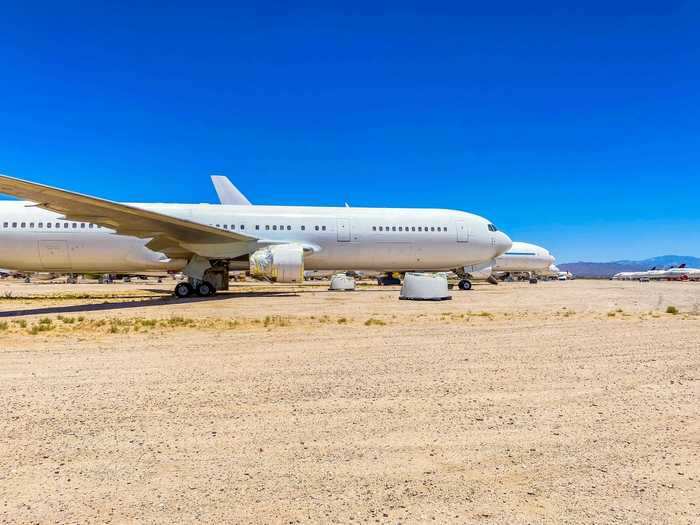
A stored Boeing 767-300 aircraft.
Thomas Pallini/Insider
Some aircraft that have already been sold are simply waiting until their owners can convert them into cargo planes. Companies like Amazon have used aircraft storage facilities as shopping malls for inexpensive aircraft that can be converted into freighters.
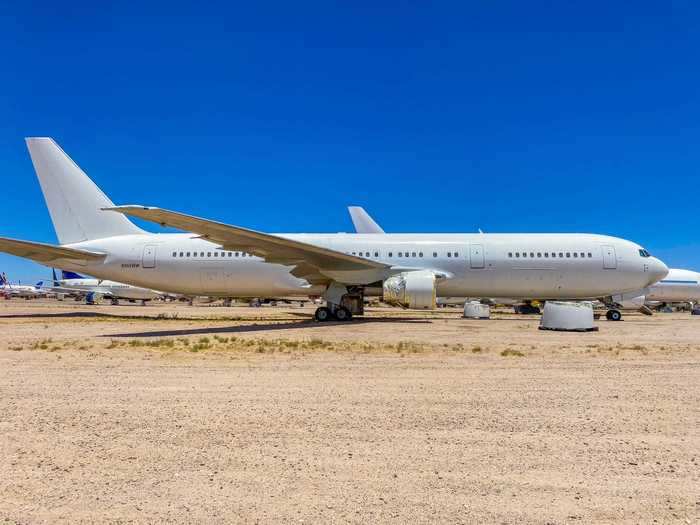
A stored Boeing 767-300 aircraft.
Thomas Pallini/Insider
Airlines were very specific about which planes they wanted back first. Airbus A319 aircraft, Butler said, "didn't really want to leave," while Airbus A321 and Boeing 737 Next Generation aircraft were some of the first out of the door.
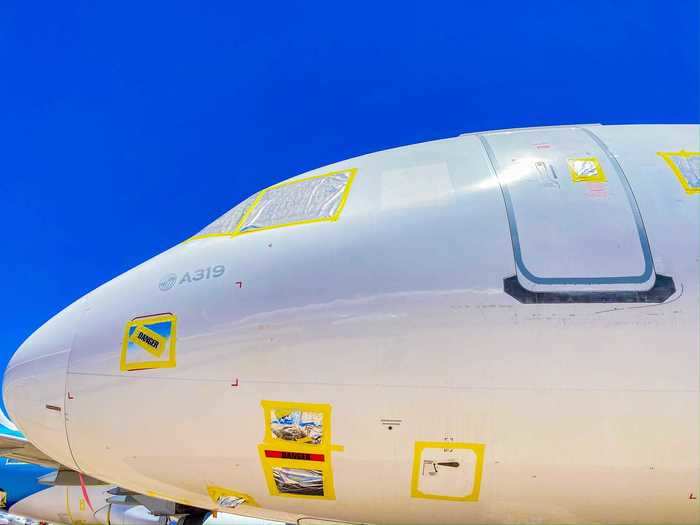
Pinal Airpark in Marana, Arizona.
Thomas Pallini/Insider
Airlines fell back on existing relationships with storage facilities. Delta Air Lines had used Pinal to store its fleet of retired Boeing 747 aircraft and Air Canada was storing its grounded 737 Max fleet there when the pandemic hit.
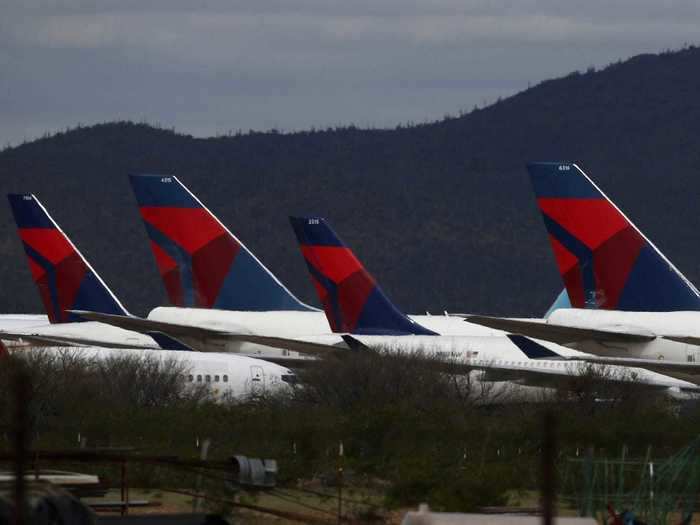
AP Photo/Ross D. Franklin
Delta was then among the first to call Ascent looking for space to park planes in March 2020. "They were pretty quick to realize it was going to be a bigger issue and probably by the end of March already had the aircraft moving this way," Butler said.
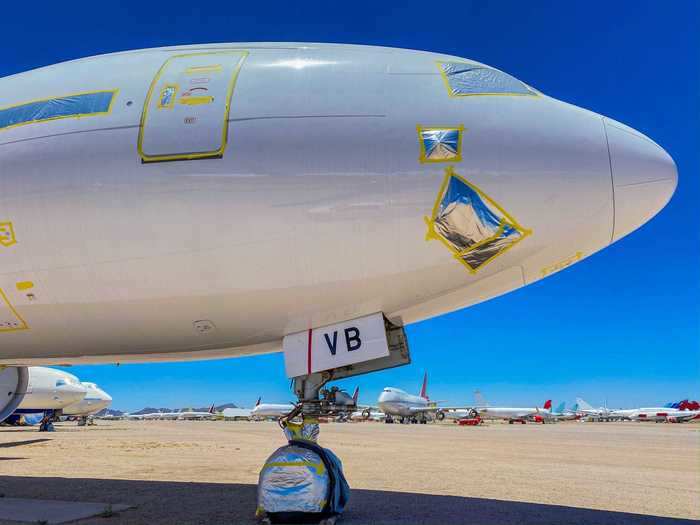
Pinal Airpark in Marana, Arizona.
Thomas Pallini/Insider
But not all of Ascent's customers were returning carriers. "A lot of these carriers had never stored an aircraft ever," Butler said, noting that low-cost carriers, in particular, could always find uses for spare aircraft in normal times.
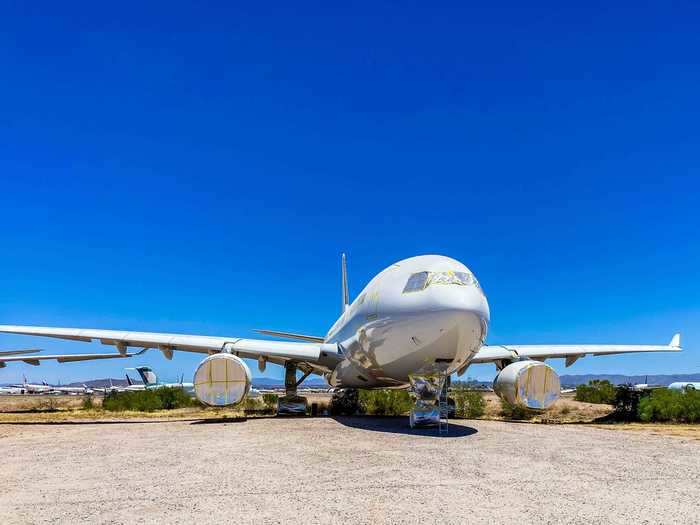
Pinal Airpark in Marana, Arizona.
Thomas Pallini/Insider
Ascent had 50 aircraft in active storage going into March which quickly jumped up to 400, with not enough mechanics to service the demand. "At the end of March, we would probably get in one per hour during the week for a few months," Butler said, noting that its workforce grew close to 700 strong to keep up with demand.
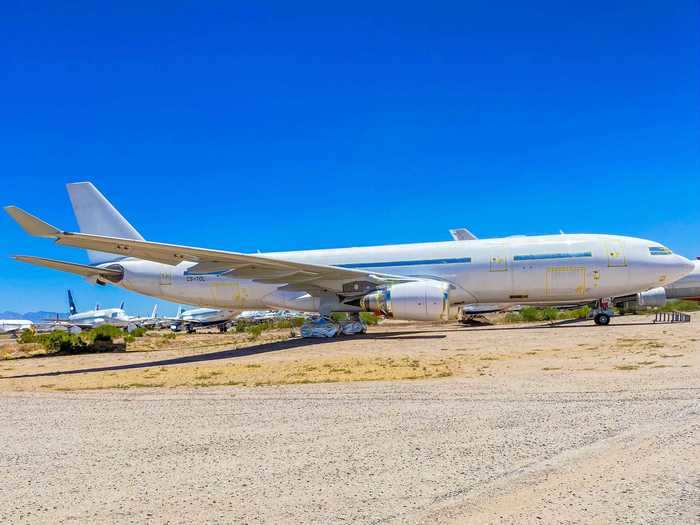
Pinal Airpark in Marana, Arizona.
Thomas Pallini/Insider
Once they land in Marana, between six to 10 mechanics go to work preparing the aircraft for storage. The two-week process starts with shoring up the engines and auxiliary power units and then focusing on an aircraft's systems and buttoning up the interior.
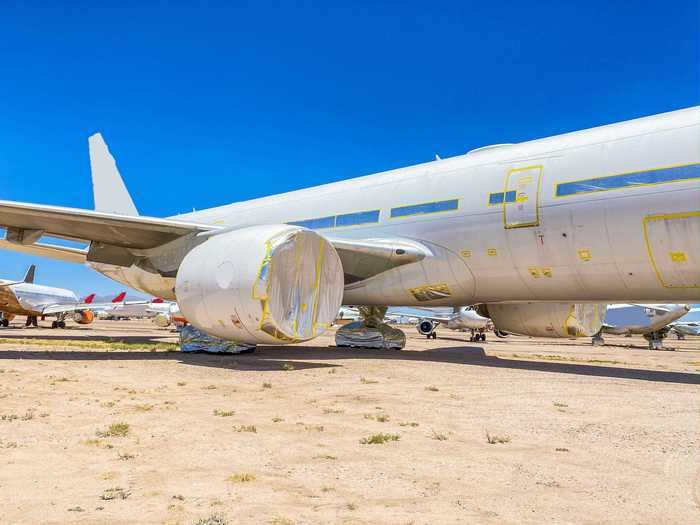
Pinal Airpark in Marana, Arizona.
Thomas Pallini/Insider
All of the valuable systems and parts need to be buttoned up to ensure they are still in useable condition and airworthy when it exits storage. That's how storage differs from parking, in the aviation world.
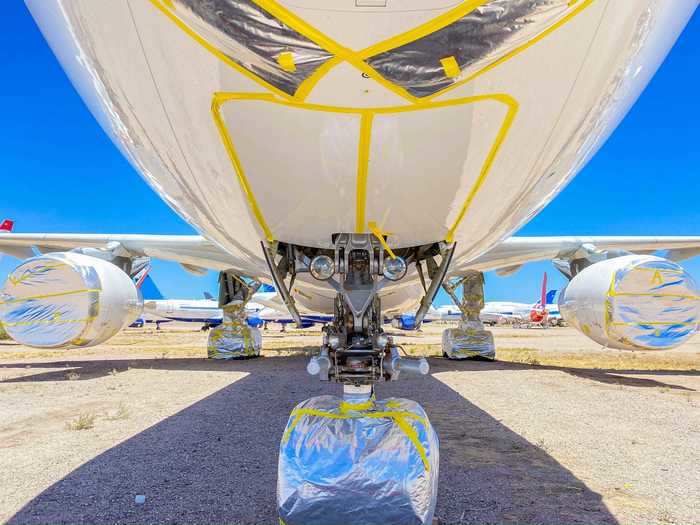
Pinal Airpark in Marana, Arizona.
Thomas Pallini/Insider
"When an aircraft comes in, it'll have to go through the initial aircraft inspection," Butler said. "We document how it came in and certain things: fuel loads, dings, scratches, whatever we can do. But the key there is to try to get that aircraft inducted into the storage program."
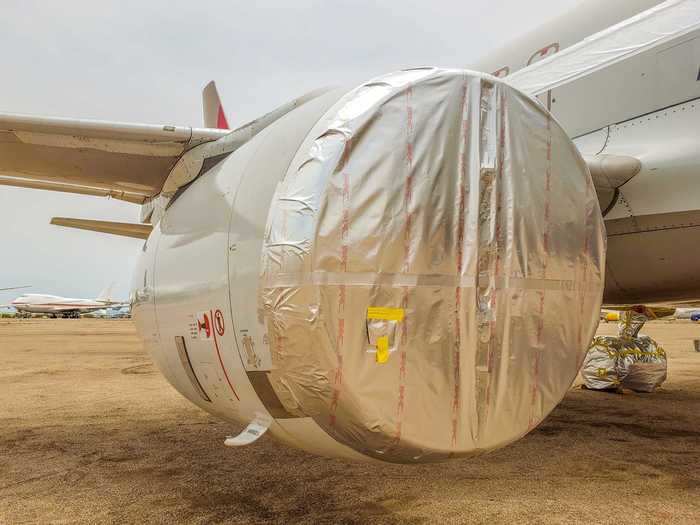
Pinal Airpark in Marana, Arizona.
Ascent Aviation Services
Butler said the engines are the most important part of an aircraft that needs to be secured, or "pickled." "That's the main money on the entire asset is the engine," Butler said.
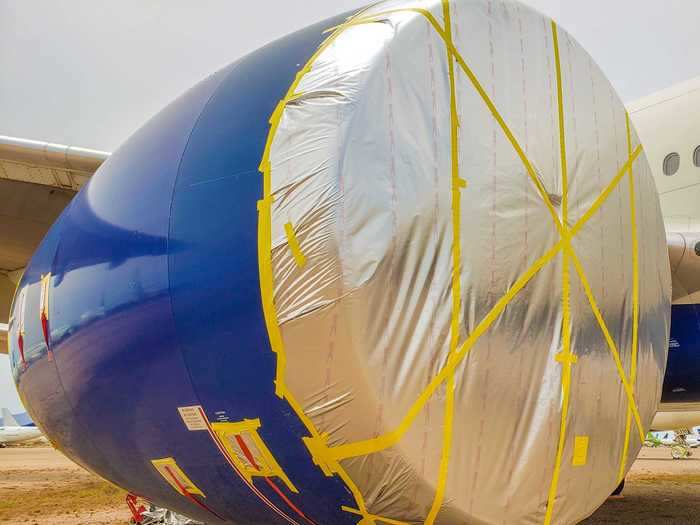
Pinal Airpark in Marana, Arizona.
Ascent Aviation Services
Mechanics are constantly checking on the aircraft while they are in storage to keep them ready for when they are eventually returned to flying service. Aircraft are checked every seven days, with each interval requiring a different type of inspection.
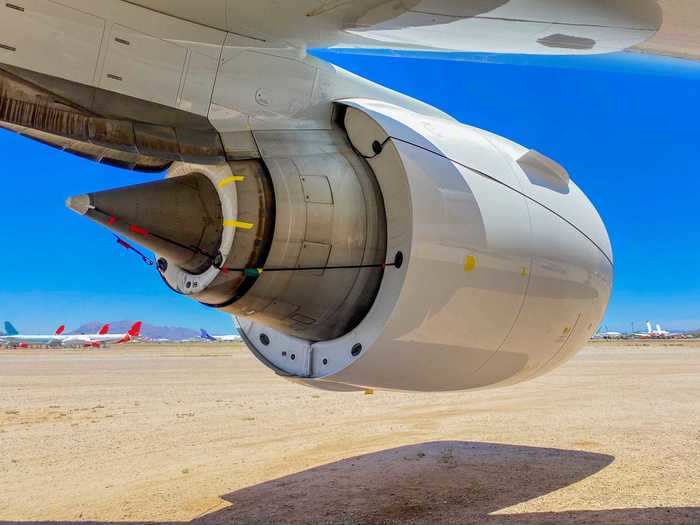
Pinal Airpark in Marana, Arizona.
Thomas Pallini/Insider
And in the desert, rattlesnakes are always a worry. Maintenance workers services Australian airline Qantas' stored planes in California had to determine protocols for removing rattlesnakes.
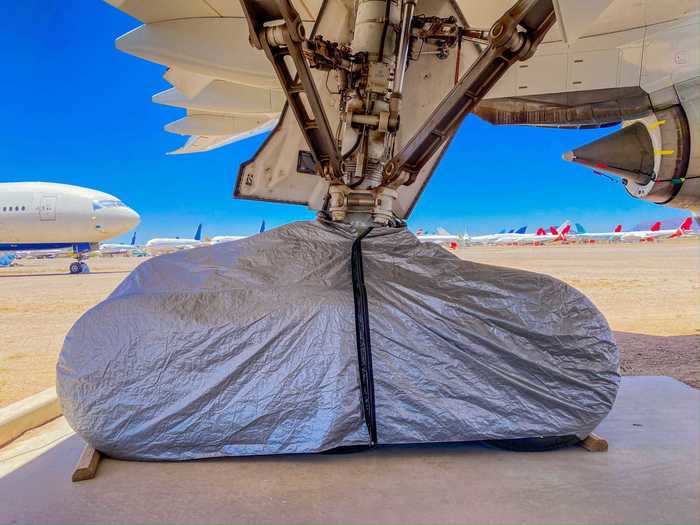
Pinal Airpark in Marana, Arizona.
Thomas Pallini/Insider
Source: Qantas
Reactivating aircraft can then take anywhere from one to three weeks, depending on the size of the aircraft and what type of work needs to be done before it can fly passengers again. Some aircraft may need complex maintenance checks and others might need minor fixes.
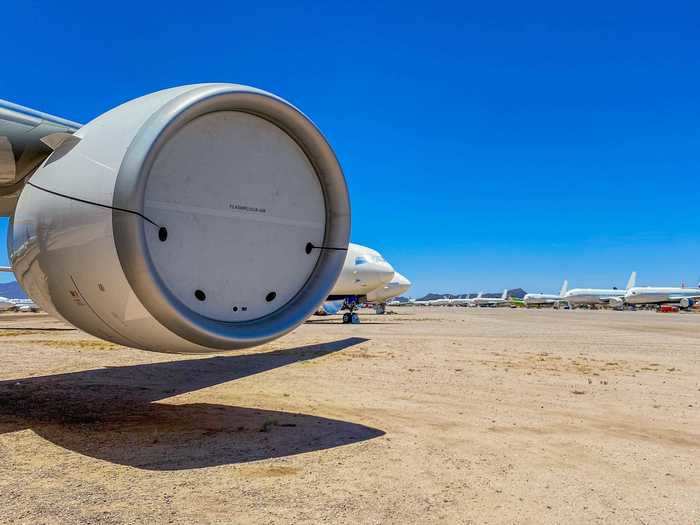
Pinal Airpark in Marana, Arizona.
Thomas Pallini/Insider
Other aircraft are in Marana for the long haul, either waiting to be purchased or being used for parts. That's why some Trans World Airlines and Northwest Airlines planes can still be found sitting in the desert sun, even if those airlines haven't flown passengers in decades.
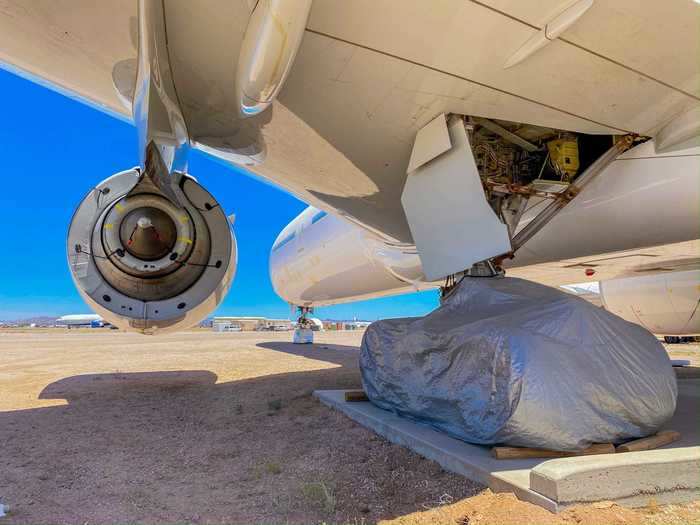
Pinal Airpark in Marana, Arizona.
Thomas Pallini/Insider
"What operators do sometimes is actually buy some planes just for the parts," Butler said, adding that there are some planes "in the 40 to 50-year-old range" that can still have parts pulled from them. "Someone's got value somewhere in them," he said.
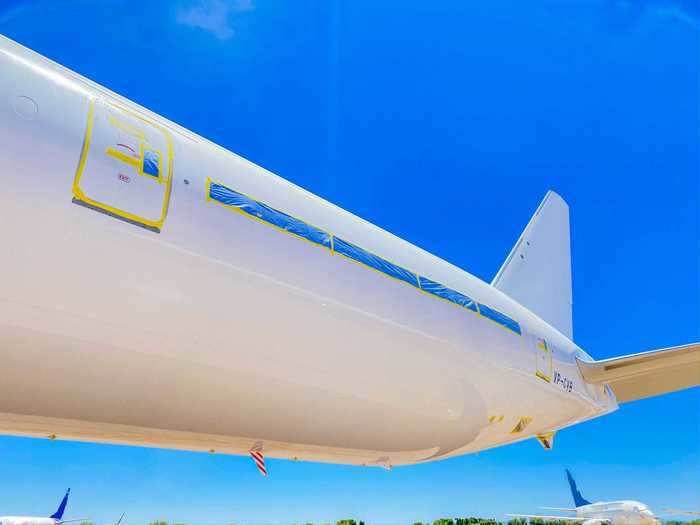
Pinal Airpark in Marana, Arizona.
Thomas Pallini/Insider
Once they land in Marana, between six to 10 mechanics go to work preparing the aircraft for storage. The two-week process starts with shoring up the engines and auxiliary power units and then focusing on an aircraft's systems and buttoning up the interior.

Pinal Airpark in Marana, Arizona.
Thomas Pallini/Insider
In Ascent's reclamation yard, mechanics go to work stripping retired aircraft of any used serviceable material and parts that can be inspected, repaired (if necessary), and certified to keep current aircraft airworthy.
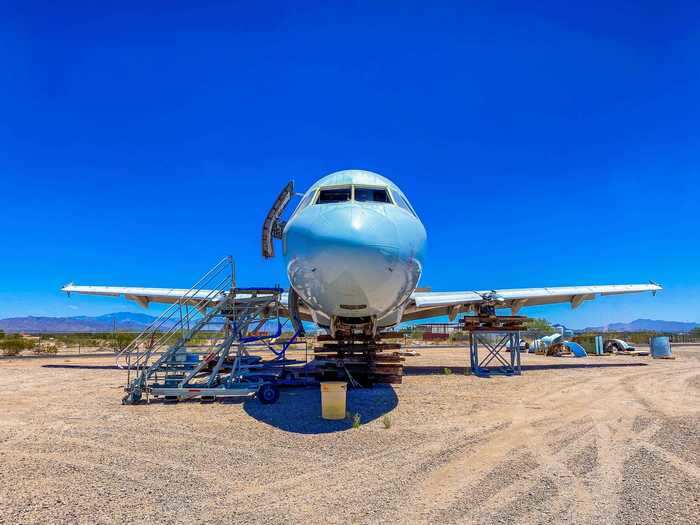
An aircraft in reclamation Pinal Airpark in Marana, Arizona.
Thomas Pallini/Insider
Butler says around 90% of an aircraft can be recycled.
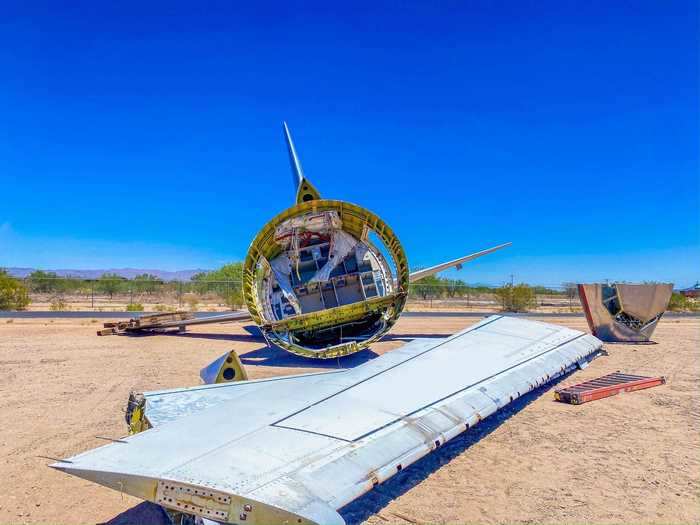
An aircraft in reclamation Pinal Airpark in Marana, Arizona.
Thomas Pallini/Insider
Aircraft can stay in reclamation state for months, at the owner's expense, to ensure that every single part is pulled.
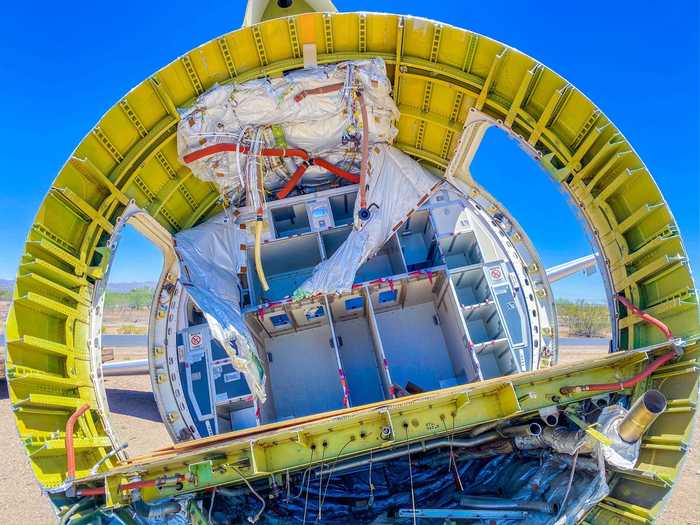
An aircraft in reclamation Pinal Airpark in Marana, Arizona.
Thomas Pallini/Insider
"There's anywhere from 600 to 1,000 parts they pull off of those aircraft," Butler said.
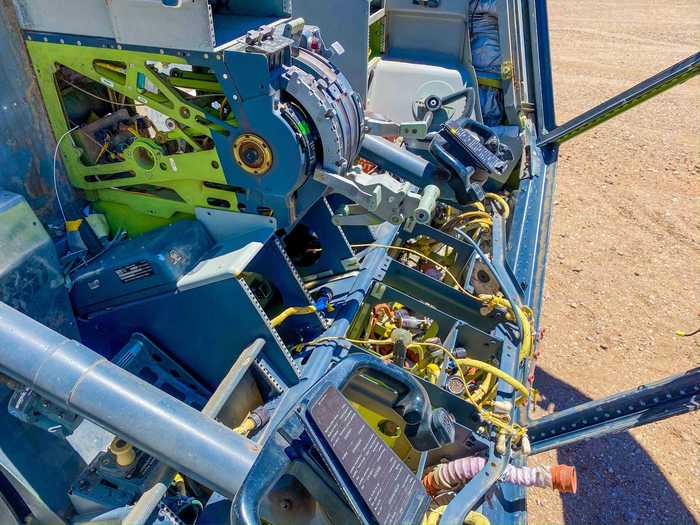
An aircraft in reclamation Pinal Airpark in Marana, Arizona.
Thomas Pallini/Insider
Airlines will use the recycled parts after they've been recertified to build their inventories so they have easy access to spare parts when needed.
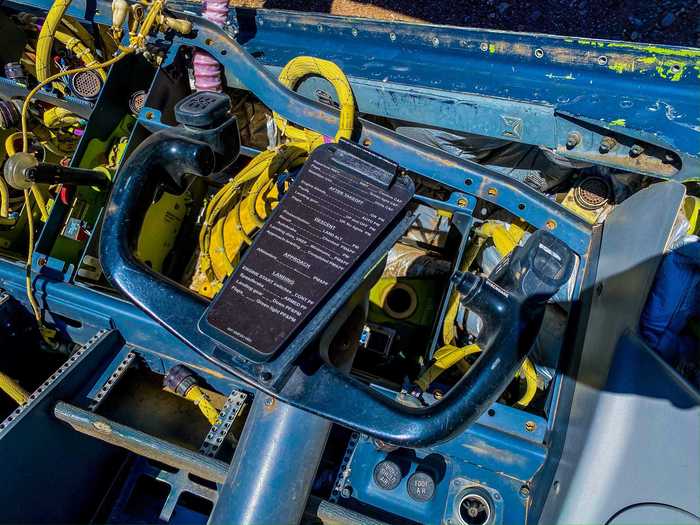
An aircraft in reclamation Pinal Airpark in Marana, Arizona.
Thomas Pallini/Insider
Even an aircraft that isn't flying anymore can still be valuable to those that are.
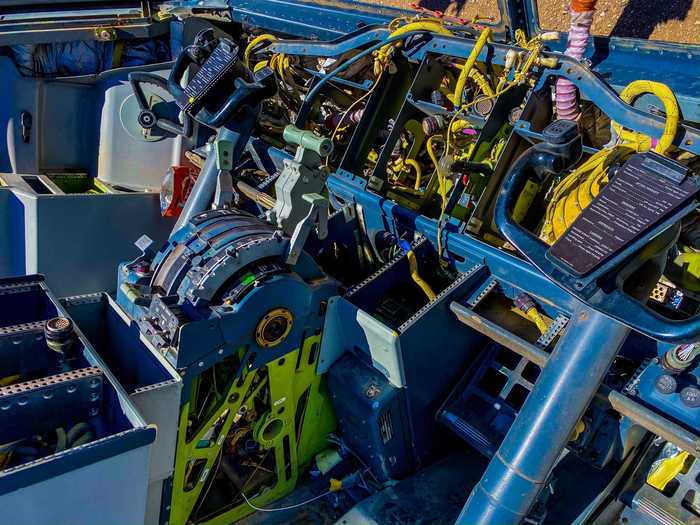
An aircraft in reclamation Pinal Airpark in Marana, Arizona.
Thomas Pallini/Insider
Aircraft components have maintenance manuals and processes to restore them and extend their life beyond just one aircraft. This Airbus A330 cockpit had been stripped dry of all its valuable parts.
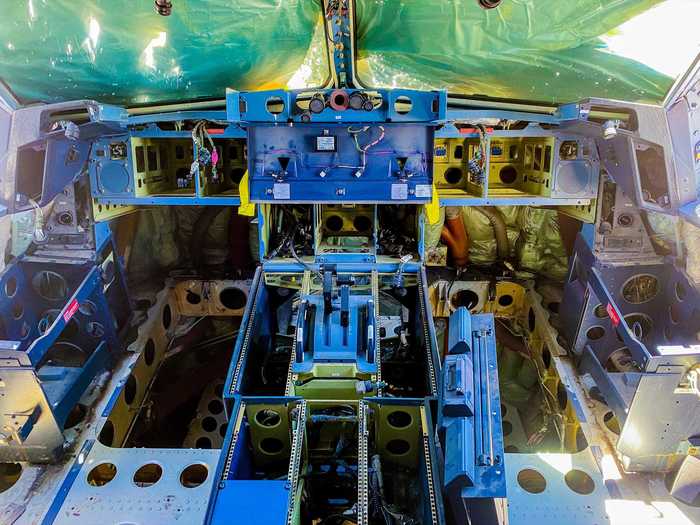
An aircraft in reclamation Pinal Airpark in Marana, Arizona.
Thomas Pallini/Insider
Even food and beverage galley carts can be reused.
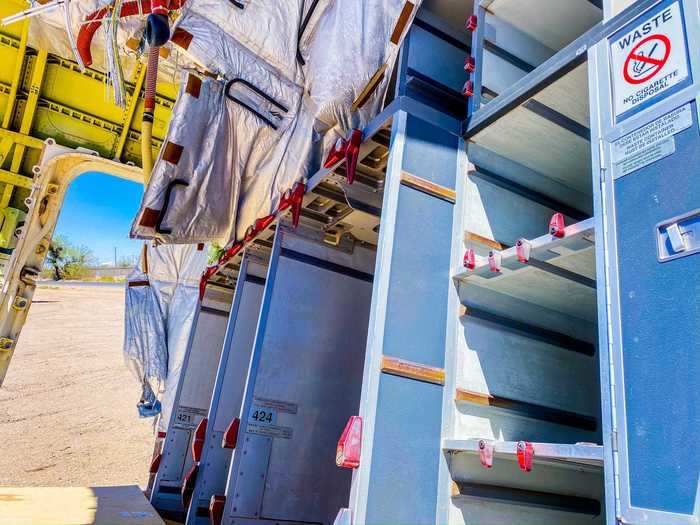
An aircraft in reclamation Pinal Airpark in Marana, Arizona.
Thomas Pallini/Insider
The interior finishes aren't as valuable as parts since airlines are constantly updating their products.
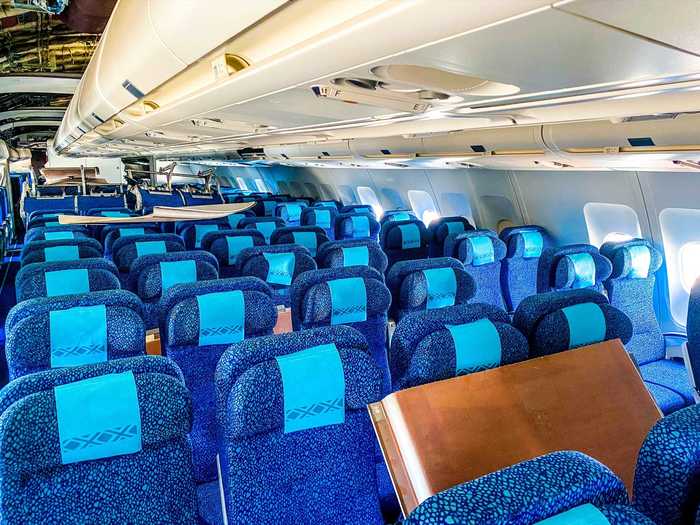
An aircraft in reclamation Pinal Airpark in Marana, Arizona.
Thomas Pallini/Insider
Inside this Airbus A330, for example, most of the seats remain intact.
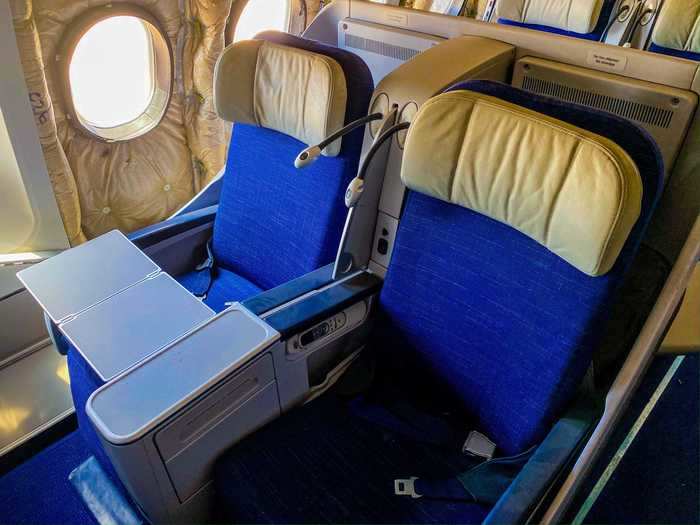
An aircraft in reclamation Pinal Airpark in Marana, Arizona.
Thomas Pallini/Insider
But just above the cabin, the exposed overhead reveals wire harnesses and assemblies, many of which have been removed to be used on other aircraft.

An aircraft in reclamation Pinal Airpark in Marana, Arizona.
Thomas Pallini/Insider
It would take a lot of cleaning to get this interior ready to fly again, but that's also a service Ascent provides.
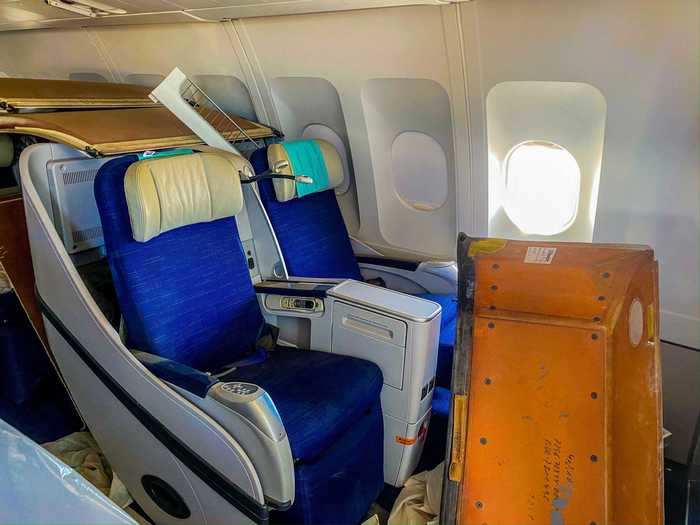
An aircraft in reclamation Pinal Airpark in Marana, Arizona.
Thomas Pallini/Insider
Aircraft owners can also write off debt on the asset as long as they have value, even if they're just sitting idle in the desert.
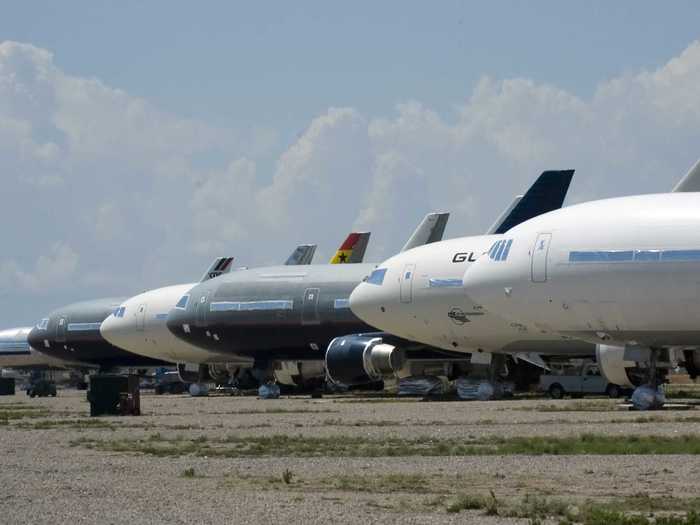
Gary Williams/Getty
READ MORE ARTICLES ON
Popular Right Now
Popular Keywords
Advertisement